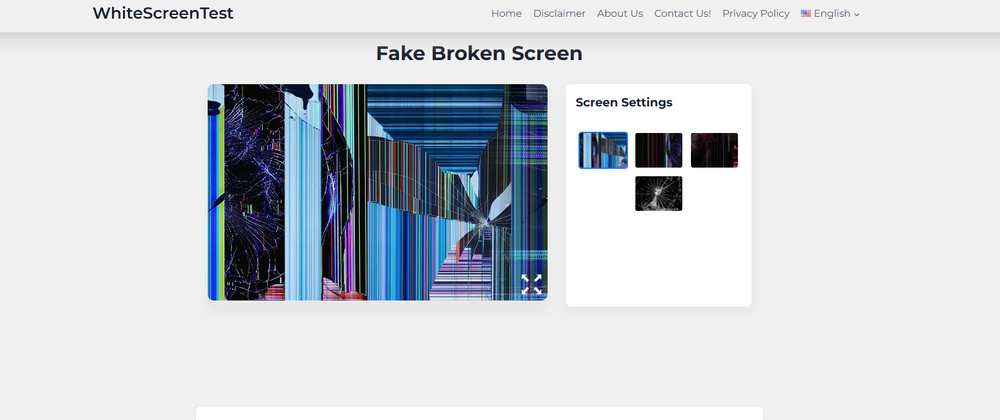Hey CodeNewbie community! 👋
I'm a frontend web developer who loves experimenting with design, user experience and occasionally, digital pranks 😄
Today I want to share how I built a strange little site called WhiteScreenTest.net, a minimalist (but secretly clever) prank site that mimics a totally blank white screen… until you realize something's off.
Along the way, I’ll also drop some frontend design tips and explain some of the techniques I used like deep CSS styling, semantic structure, and some surprising uses of PHP.
🧪 The Premise: A Site That Looks Empty
WhiteScreenTest.net appears at first to be just a blank white webpage. No UI. No text. Just… whitespace.
But look closer (or right-click!). There's actually a fully functional, styled HTML page beneath that illusion complete with hidden buttons, playful behavior, and a few surprises if you're curious enough to explore.
So, how was this built? Let's dig into the stack.
🧰 The Tech Stack
- Frontend: HTML5, Deep CSS (custom variables, animations, media queries)
- Backend: PHP (light usage for headers and server-side tricks)
- Design Approach: Minimalist deception using UI layering, absolute positioning, and contrast manipulation
🔍 Key Frontend Techniques I Used
1. Deep CSS Styling (aka, Going Beyond the Surface)
When I say "deep CSS," I’m talking about going beyond the basics of layout and color, and instead using:
-
Custom properties (
--variables) for theme consistency -
Pseudo-selectors (
:hover,:focus-within,:active) to trigger UI events - Z-index layering to control stacking order and hide/show elements behind the “white screen”
- Transitions and keyframe animations to add dynamic feel—subtle ones, so they’re not immediately noticeable
Pro tip: Want to improve your design game? Try redesigning a simple component using only :hover, :before, and :after. You’ll learn a lot about how much CSS can actually do.
2. Accessibility and Semantics (Even in a Prank Site)
Even though the site is mostly a joke, I still used proper semantic HTML:
-
main,section,button, andaria-hiddenattributes - This ensures that screen readers and dev tools still have something to interact with
- Also, using
role="button"and keyboard accessibility makes the prank more ethical 😇
Accessibility isn’t just for corporate sites it's a good habit for every project.
3. Light PHP Backend for Fun
While most of the magic happens on the frontend, PHP helps with:
- Sending specific HTTP headers
- Occasionally randomizing content (e.g. easter egg messages or redirects)
- Logging user visits or interactions (basic analytics, no personal data)
For beginners: Even if you’re focused on frontend, learning a bit of PHP can make your sites more dynamic without needing a full JavaScript stack.
💡 Tips to Improve Your Frontend Design Skills
Whether you're building something serious or silly, here are a few things that helped me level up:
✅ 1. Use Browser DevTools Daily
Inspect existing websites. Look at how they structure components and style things. Try to recreate them in your own sandbox.
🎨 2. Study Color, Contrast, and Spacing
Bad design is usually not about code—it's about visual balance. Play with tools like Coolors or Grid Layout It to train your eye.
🎯 3. Start with Function, Polish with Style
Always make it work first, then make it beautiful. And if it’s a prank site, make it deviously subtle 😉
🎁 Want to Try It Yourself?
Visit whitescreentest.net and try interacting with it. Maybe press a few keys. Maybe inspect the elements. Maybe… just maybe, you’ll find the secret.
And if you do, tweet me your findings I’d love to see what you uncover!
🧵 Let's Connect
Are you working on something weird, fun, or design-focused? Drop your links or WIPs below 👇 I'd love to see what the CodeNewbie community is building.
And if you want to collab on a silly web experiment, hit me up!
Or Just prank with Broken Screen
Happy coding,
[mike johnson]




Top comments (0)
Some comments may only be visible to logged-in visitors. Sign in to view all comments.